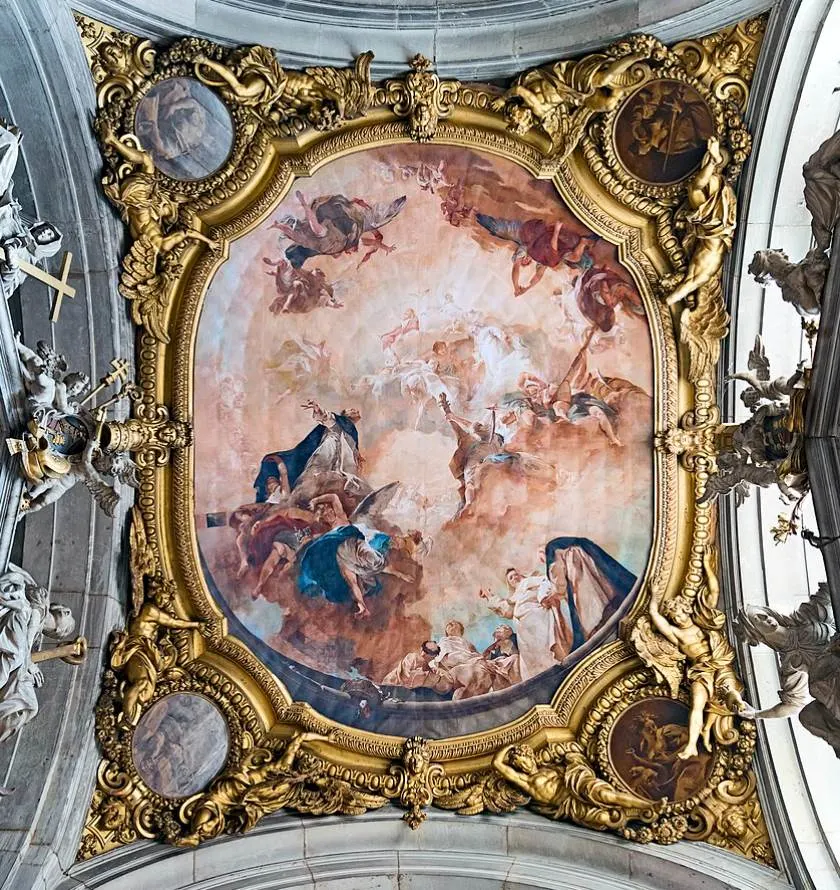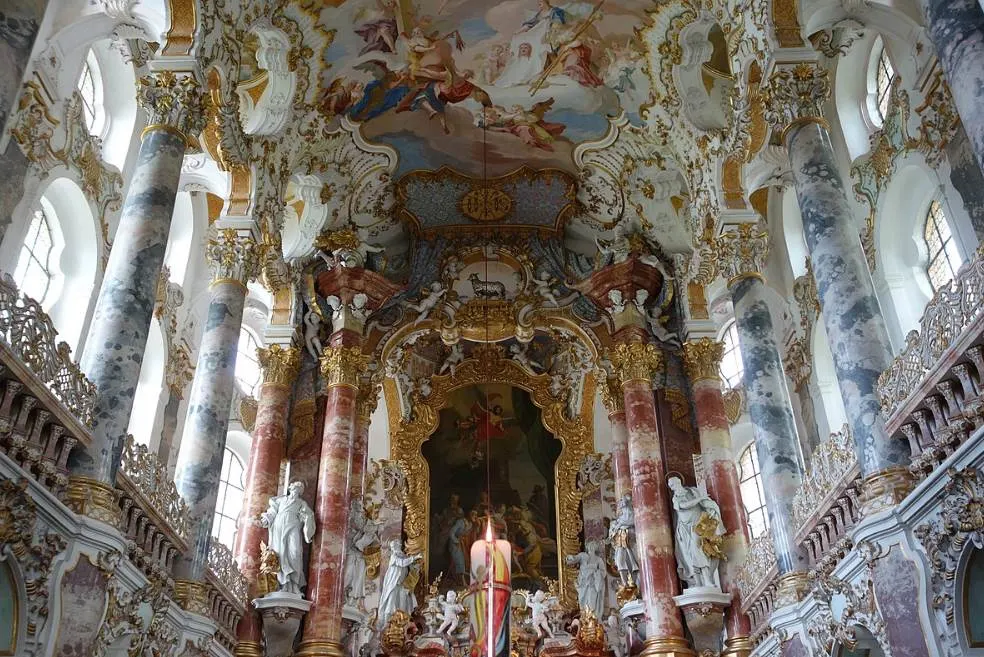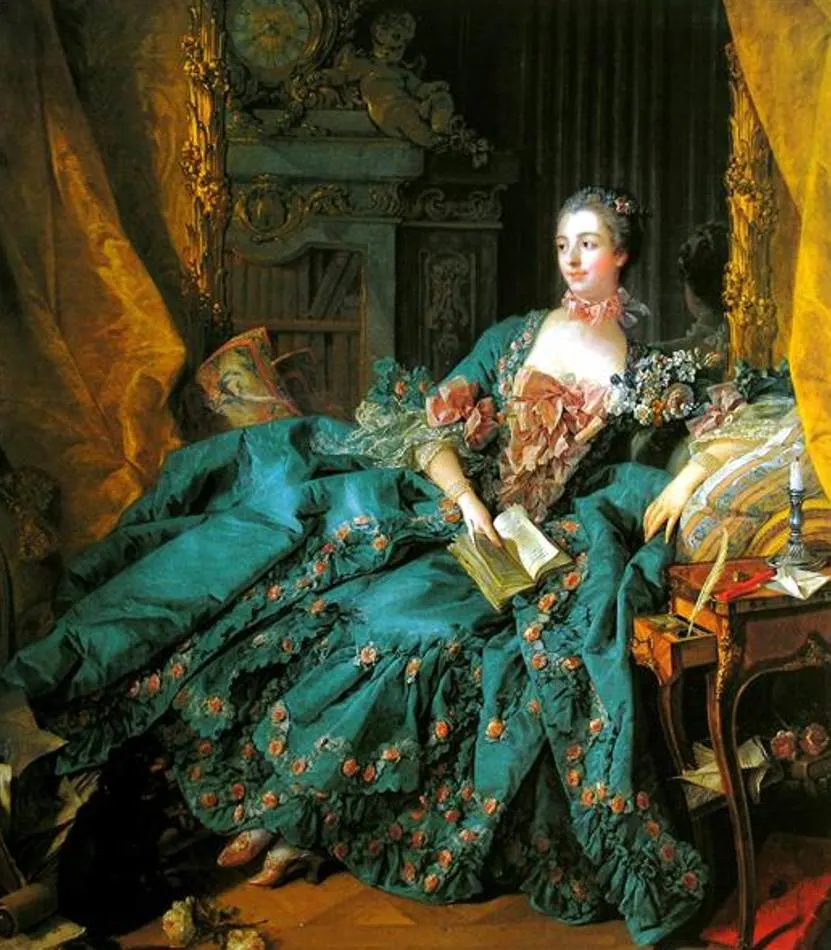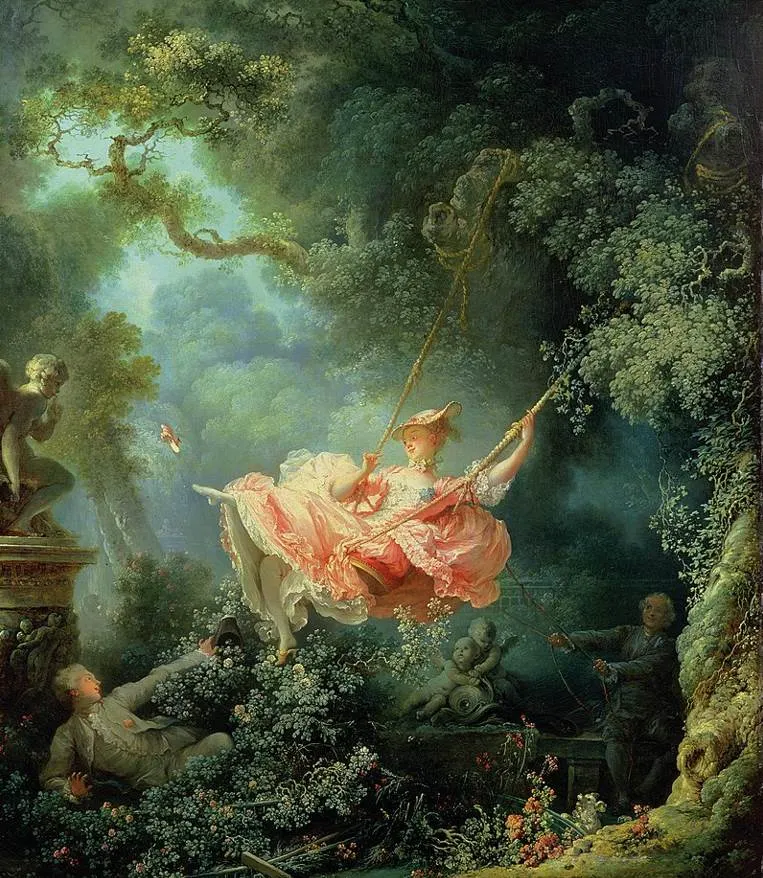If there is one art movement that beats all others in terms of exuberance then it’s definitely this 18th-century style that emerged in France.
Rococo art followed Baroque art and is sometimes referred to as “Late Baroque.” That’s because Rococo artists built onto the already theatrical Baroque style of the 17th century.
The movement didn’t last long because it was considered to be too superficial. It was replaced by Neoclassical art in the final decades of the 18th century.

History of Rococo Art
The style known today as Rococo emerged in the 1730s and spread all across Europe in the following decades. It manifested differently in several parts of the world.
That’s why it’s better to look at the history of Rococo Art based on the location, which is why I have created an overview of Rococo art in different countries.
France
Rococo was originally referred to as “Style Rocaille” and it began at the French court in the 1730s. A lacune was left after King Louis XIV (1638-1715) died which had to be filled.
The austere and seriousness of the Louis XIV style, also known as “French Classicism,” was replaced by Rocaille, a style of exuberant ornamentation. The word “Rococo” wasn’t used for the first time until 1825 to describe a form of art that was “out of style.”
Germany
Many palaces were constructed in southern Germany in the 18th century. Although many still incorporated Baroque architecture, many interiors were decorated in the Rococo style.
Rococo art spread from secular buildings to churches and some of the most magnificent Rococo decorations in churches can be found in the state of Bavaria.
Italy

Rococo in Italy was mostly centered in Venice, the lagoon city in the northeastern part of the country. Just like German churches, many Venetian churches were decorated with Rococo murals and frescoes.
Italian artist Giovanni Battista Tiepolo (1696-1770) was the most notable artist who worked in this style. He was inspired by a trip to Germany in which he saw the magnificent interior decorations of German churches.
Britain
When Rococo arrived in Britain it was referred to as the “French Taste.” This isn’t a very appealing term so the style didn’t really gain as much popularity here as it did in Continental Europe.
British artists and art theorists were careful in their use of the word Rococo. A great example of this is William Hogarth’s work Analysis of Beauty (1753) in which he defines the style without mentioning its name.

Main Characteristics of Rococo Art
Rococo Art is defined by an abundance of curves. In that respect, it builds on top of the ideals of Barque art but it completely exaggerated the former style.
Below you can find a list of characteristics of Rococo Art and why it’s fairly easy to differentiate it from Baroque Art.
- An abundance of curves and counter-curves – The main goal was to integrate as many curves as possible.
- Asymmetry wasn’t an issue – While Baroque art and architecture still aimed to produce a symmetrical design, this was partially abandoned during the Rococo era.
- Quadratura to impress – Entire ceilings were painted with amazing trompe-l’œil frescoes with the sole aim to create a sense of awe.
- The use of flowers in decorations – Using flowers to decorate the interior of buildings wasn’t something new, but Rococo artists completely exaggerated this.
- Using warm pastel colors – Light yellow, light blue, cream color, and pearl grey were often used to enhance the warm effect of decorations and interiors.

Types of Rococo Art
The theatrical style that emerged in the 18th century was considered to be nothing more than a fad for a long period of time.
The term Rococo was used for the first time in the 1820s and it was generally accepted to be an art movement in the mid-19th century.
Below is an overview of the different types of art that were produced during the Rococo era.
Furniture
Some of the first items that can be classified as Rococo art were sets of furniture. The abundance of curves used to decorate chairs and tables spread to other forms of art in the 18th century.
Painting
The style emerged in the paintings of Jean-Antoine Watteau in the early 18th century and heavily influenced successive artists. Exuberant hedonism and veiled eroticism define Rococo painting.
Sculpture
Rococo sculptors built upon the ideals of Baroque sculptors. They added an extra dimension to the sense of motion that defined Baroque sculptures to create extremely dynamic works of art.
Porcelain
The monumental sculptures were downsized tremendously as well. This resulted in delicate little porcelain sculptures that were used for interior decorations. The first factory to produce Meissen porcelain emerged in Germany.
Fashion
Rococo fashion can be admired in the countless portraits that were produced of members of the French court during the reign of Louis XV. As you surely expected, the style was both exuberant and extravagant.

Notable Rococo Artworks
If you want to explore some of the most famous Rococo artworks ever produced, then the list below will help you on your way.
- The Swing (1767) – The most famous painting by Jean-Honoré Fragonard (1732-1806). It defines the hedonistic attitude of members of the French court in the 18th century.
- Wieskirche – The interior of this relatively small Pilgrimage Church of Wies overflows with ornamental Rococo decorations. It’s located in Steingaden in the utmost southeastern corner of Bavaria.
- The Triumph of Venus (1740) – An incredible painting by François Boucher (1703-1770), one of the leading Rococo artists of the 18th century.
- The Hall of Mirrors – One of the great rooms at Amalienburg, a relatively small but famous palace in the Nymphenburg Palace Park in Munich, Germany.
- The Blue Boy (1770) – One of the most famous paintings by Thomas Gainsborough (1727-1788) an English artist who lived during the Rococo era.
Want to learn more? Then check out some of the most famous Rococo paintings.

